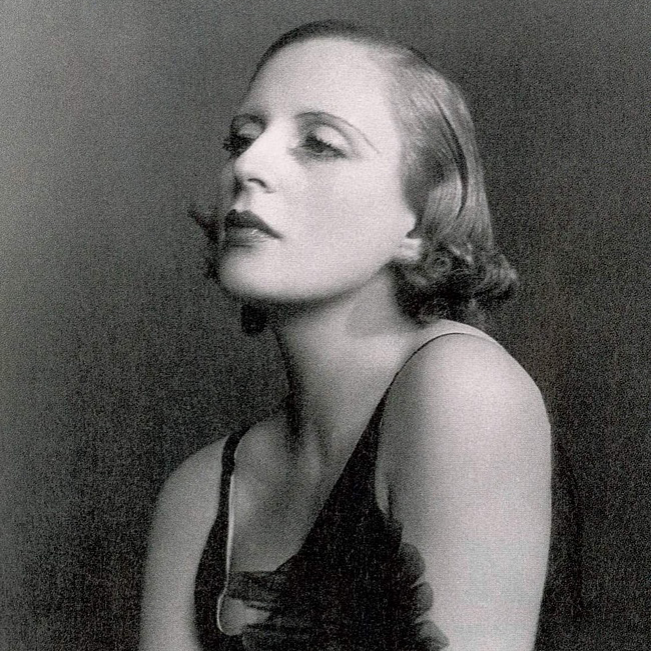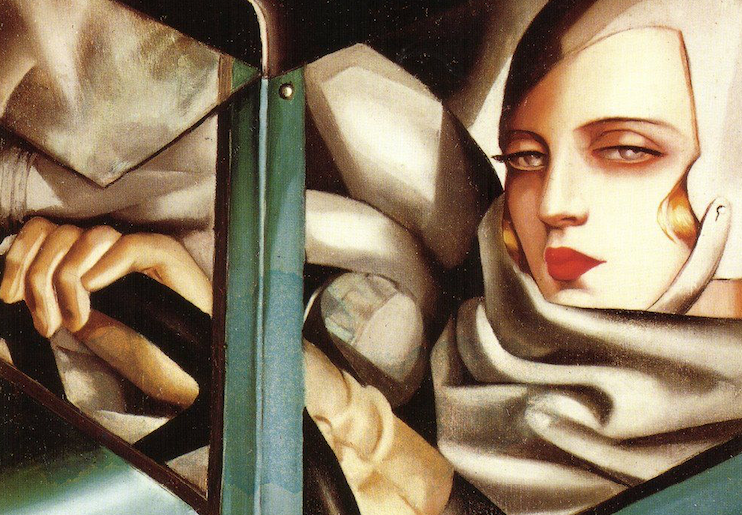Right after the first world war, a renovated sentiment of spirited vitality moved the bourgeoisie of the western world. A desire to erase the horrors of the global conflict, live in dissoluteness, abandoning the self to frivolity and drowning in luxury.
The sumptuous parties of the bored Gatsby, the agitated moves of the Charleston dancers and the expanding financial market of Wall Street, all gave the impression that the nightmare of the war was long gone, and it was now time for a newly found joie de vivre.
In this social context, Art Deco spread horizontally between interior design, clothing, architecture and, of course, painting. A modern and elegant new artistic outlet, able to encapsulate the golden age of the 1920s. The movement was characterized by geometric lines, rigorous and opulent compositions, stylized ornaments representing flowers, sunrays and animals.

Tamara de Lempicka, artist and living representation of the pre and post war parabola, had a life stormed by bored decadence and progressive impetus.
Born in Poland in 1898, she grew up surrounded by ease and indulged in mundane activities. She faced upheaval during the Russian Revolution, when her first husband got imprisoned by the Bolsheviks due to his aristocratic status. Lempicka’s connections had the man freed, and soonly after the couple fled to Paris.
It’s in the French capital that the woman fully embarked in her creative journey, embraced her lascivious personality and dived into the tumultuous cosmopolitan subculture.
She enrolled in the Académie de la Grande Chaumier, fascinated by the guidance of old masters and attracted by the teachings and features of Art Deco.
Her work quickly became vastly appreciated and to the name “Tamara de Lempicka” corresponded the portraitist of the roaring twenties, with the depiction of soulless stares and splendid ambiences. Elements of cubism and neoclassicism were incorporated in her creations, giving to her paintings a jagged look, yet far from the one of Picasso or Braque. While her colleagues were focusing on complex scenes including multiple figures, she specialized on single subjects: wealthy aristocrats and highly stylized nudes, often females.
Her declared bisexuality made such a peculiar character even more controversial: her continuous and scandalous affairs, dictated by a fluid and liberated eroticism, were topic of discussion in every Parisian salon.
The artist was on the front lines of an agitated avantgarde, where traditional social schemes were daily battled and disregarded.
One of the voluptuous protagonists of her production was Suzy Solidor, declared lesbian, club owner and nightlife icon, who had previously modeled for Picasso, Bacon and Ray: her portrait resulted in one of Lempicka’s most famous paintings.
Tamara would often attend women-only afternoons hosted by the American poet Natalie Barney, and was part of that libertine French underground involving figures such as Colette and Vita Sackville-West (tumultuously and romantically tied to Virginia Woolf).
Her hedonistic lifestyle became a flag of unchained femininity, in a time where such freedom was totally unorthodox.
Sex, alcohol, cigarettes, weary erotism, cultural salons, brusque attitude and again more sex, more alcohol, more cigarettes: “I live life in the margins of society,” Lempicka said. “And the rules of normal society don’t apply to those who live on the fringe.”

Her undeniable pop culture appeal is consecrated by the number of notable collectors she has garnered. Madonna, celebre singer, similarly queer icon and symbol of sexual emancipation, claims to own her personal “Lempicka museum”.
It’s not difficult to understand what this self-confessed “Material Girl” sees in the Art Deco artist, joining admiration and identification. Tamara’s touch was incorporated several times in Madonna’s eclectic self-expression: the music videos of “Express Yourself” and “Vogue” showcase symbolically the admired work.
Her painting “Autoportrait (Tamara in a Green Bugatti)”, magistrally condenses the imaginary of an authoritative woman, who has agency and is in full control. The look in her eyes is determined, firm, seductive and dissolute, and few other words could better describe this icon’s temper. Tamara de Lempicka, willingly or not, helped shape the future of an entire community and her legacy will silently go down in history.
A century has now passed since Tamara was navigating the changing hierarchy of western societies, nurturing a rebellious environment of extraordinary women. Whether her desire was to fight for a rising movement, or simply fulfill her urge to be true to herself, figures like hers paved the way to female independence.
